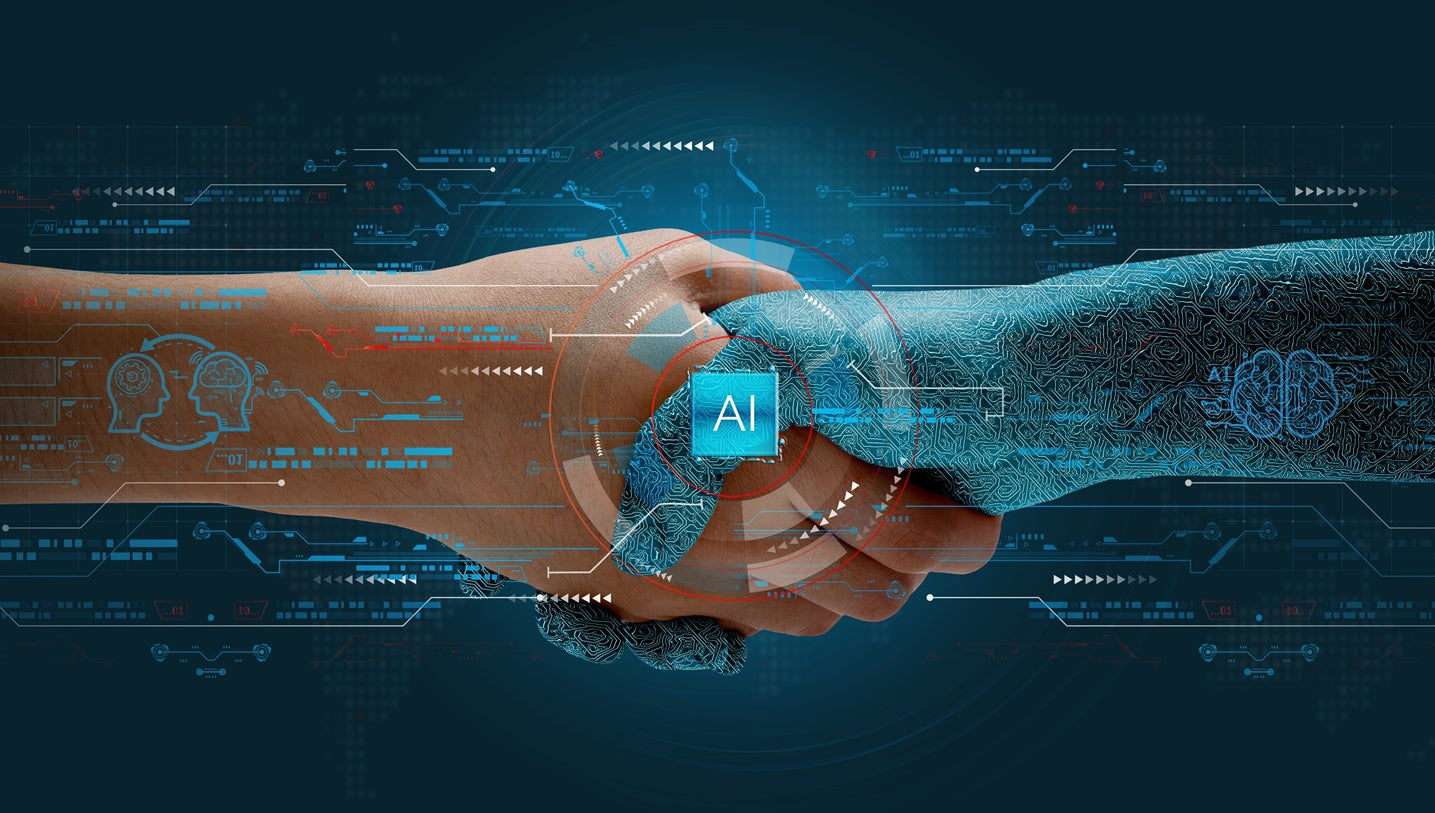
- TechnaCore Ai
The Future of Work: Human + AI Collaboration
Artificial Intelligence (AI) is rapidly changing the way we live, work, and interact. While some fear that AI will replace jobs, the reality is far more balanced. The future of work is not about humans versus AI—it is about humans working with AI. This collaboration between people and intelligent machines has the power to redefine industries, boost productivity, and create opportunities that were once unimaginable.
In this article, we will explore how human + AI collaboration is shaping the workplace, the benefits it brings, and how businesses and employees can prepare for this transformation
Understanding Human + AI Collaboration
Human + AI collaboration refers to the partnership between human intelligence and artificial intelligence in performing tasks. Instead of AI replacing human workers, it supports them by automating repetitive tasks, analyzing complex data, and providing actionable insights.
Humans bring creativity, emotional intelligence, critical thinking, and problem-solving, while AI contributes speed, accuracy, and scalability. Together, they form a powerful combination that enhances efficiency and innovation.
Why Human + AI Collaboration Matters
The workplace is evolving faster than ever, and collaboration between humans and AI is no longer optional—it is essential. Businesses that embrace this model are able to:
- Increase productivity by automating routine processes.
- Enhance decision-making with AI-driven data insights.
- Deliver better customer experiences through personalization.
- Empower employees to focus on creative and strategic tasks.
This synergy between humans and AI ensures that organizations remain competitive in an increasingly digital economy.
Key Benefits of Human + AI Collaboration
1. Enhanced Productivity
AI tools automate repetitive tasks such as scheduling, reporting, and data entry. Employees save time and focus on higher-value work, leading to greater overall productivity.
2. Smarter Decision-Making
AI-powered analytics process vast amounts of data quickly, uncovering trends and predictions. Human workers use these insights to make more informed and strategic decisions.
3. Improved Customer Experiences
AI chatbots, recommendation engines, and virtual assistants provide personalized customer service. Human staff then handle complex or emotional situations, ensuring customers feel valued.
4. Continuous Innovation
By handling routine operations, AI frees employees to explore new ideas, innovate, and develop creative solutions. This balance drives long-term business growth.
5. Employee Empowerment
When AI is used correctly, it enhances employee roles rather than replaces them. Workers gain access to tools that make their jobs easier and more impactful.
Examples of Human + AI Collaboration in Action
- Healthcare: Doctors use AI diagnostic tools to analyze medical images quickly, while their expertise ensures accurate treatment decisions.
- Finance: AI detects fraudulent transactions, but human analysts evaluate risks and make final calls.
- Retail: AI-powered recommendation engines personalize shopping experiences, while sales staff provide human interaction and advice.
- Manufacturing: Robots perform precision tasks on assembly lines, while human supervisors oversee quality and safety.
- Customer Support: AI chatbots resolve common queries instantly, leaving complex cases for human agents.
These examples show that AI is not replacing jobs but transforming them into hybrid roles where humans and machines work together.
Challenges in Human + AI Collaboration
While the opportunities are immense, businesses must overcome several challenges to make collaboration successful:
- Employee Resistance: Workers may fear job loss or mistrust AI systems.
- Data Quality Issues: AI depends on clean, reliable data to function effectively.
- Skill Gaps: Employees need training to use AI tools efficiently.
- Ethical Concerns: Bias, fairness, and transparency in AI systems must be carefully managed.
- Integration Complexity: Implementing AI requires investment, infrastructure, and proper change management.
By addressing these challenges proactively, businesses can ensure smoother adoption and maximize the benefits of human + AI collaboration.
Preparing for the Future of Work
For businesses and employees to thrive in an AI-driven world, preparation is crucial. Here are some strategies to embrace the human + AI future:
1. Invest in Reskilling and Upskilling
Employees need to learn new skills such as data literacy, AI tool usage, and critical thinking. Businesses should provide continuous training programs to keep their workforce adaptable.
2. Foster a Culture of Collaboration
Encourage employees to see AI as a partner rather than a competitor. Communicate clearly about how AI supports their roles and enhances productivity.
3. Adopt the Right AI Tools
Select AI solutions that align with business objectives and integrate seamlessly with existing systems. Starting with small projects can build confidence and minimize risk.
4. Prioritize Ethics and Transparency
Implement ethical guidelines for AI use, ensuring fairness, accountability, and transparency in all decisions made with AI assistance.
5. Encourage Human Creativity
While AI handles repetitive tasks, employees should focus on creativity, innovation, and building strong customer relationships—the areas where humans excel.
The Long-Term Impact of Human + AI Collaboration
The future of work will look very different from today. As AI continues to evolve, more roles will become hybrid, blending human judgment with machine efficiency. Some jobs may disappear, but many more will be created.
Reports suggest that AI could add trillions of dollars to the global economy by 2030, largely through productivity gains and innovation. The key to success lies in embracing AI as a tool for empowerment rather than a threat.
Ultimately, businesses that strike the right balance between human and AI capabilities will lead the way in shaping the next era of work.
Conclusion
The future of work is not about AI replacing humans—it is about collaboration. Human + AI integration creates a workplace where employees are empowered by technology to achieve more, innovate faster, and deliver exceptional customer value.
Businesses that prepare now by investing in training, ethical AI practices, and collaboration strategies will not only avoid disruption but also thrive in the new economy.
The organizations that embrace human + AI collaboration today will define the future of work tomorrow.
